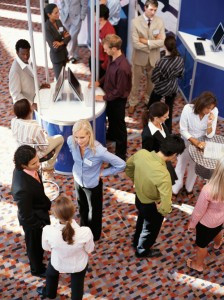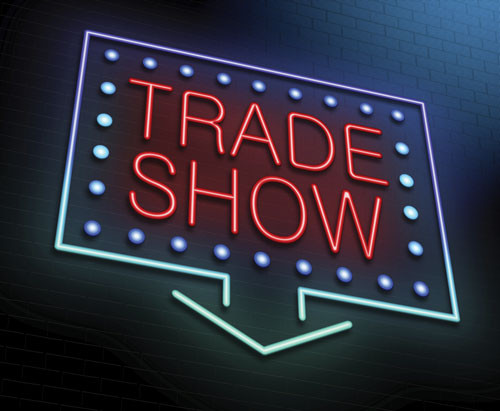To Go or Not to Go
Dan Calabrese //February 1, 2015//
 In a tight-margin business like pet retailing, where every dollar is precious and every minute you’re open for business can be crucial to revenue growth, can you afford to spend time at a trade show? Especially when you’re running a small operation and you don’t have sufficient staff to both run the store and man a trade show for what could be a period of several days?
In a tight-margin business like pet retailing, where every dollar is precious and every minute you’re open for business can be crucial to revenue growth, can you afford to spend time at a trade show? Especially when you’re running a small operation and you don’t have sufficient staff to both run the store and man a trade show for what could be a period of several days?
Not surprisingly, many in the trade show industry insist that you can’t afford not to attend because of the networking and educational opportunities that are available. But experts also advise that there’s not much point in going if you don’t have a well-conceived plan that allows you to take advantage of your presence there, or if you’re not prepared to do the ongoing follow-up that will net you real results.
“Some independent retailers say, ‘I can’t afford to be out of the store; I don’t have time to go a trade show,’” said Georganne Bender, a partner with the St. Charles, Illinois-based trade-show consulting firm Kizer & Bender. “We say you can’t afford not to, because if you try to run your store by never going out and seeing what your major trade show is doing, you’re operating in a vacuum. You have to try to change your business at least 10 percent every year, because if you don’t, the world moves on ahead of you.”
Bender’s partner, Rich Kizer, emphasized that pet retailers must approach a show with a thorough game plan, which includes lots of advance work.
“Before you even go, preplan what you want to accomplish and what you need to accomplish,” he said. “That means reviewing any kind of information you get in the mail from the vendors or from the association. If you can make appointments with the vendors before the show, then you don’t waste time and you can maximize the time you do have.”
Judi Baker Neufeld, owner of Pittsburgh-based Trade Show Plus, believes it’s also crucial to design your booth in such a way that people feel it’s open to them.
“What they do with a booth is they put a big table in the front, and it acts as an obstacle to people walking into a booth,” she said. “And it also gives you an excuse to sit down behind the table. That’s not a good thing. It looks very passive. And if someone walks up to your table and you’re sitting, it’s kind of rude not to get up and talk to them. I see this all the time.”
Of course, not all consultants agree on what the primary objective of going to a show is in the first place. Kizer and Bender both emphasize the learning opportunities that come with peer interaction, especially when you’re dealing with retailers who don’t compete in your geographic area and thus would not be threatened by sharing information with you.
“Probably the biggest change we see is getting people to meet other people who are in the same business they are,” said Kizer. “They are peers but they’re not you’re competitors. They’re sharing things. That dynamic grows.”
But is that an achievement that’s tangible enough to justify the time spent at a show? Kizer thinks so.
“Success means, first, going to a trade show with a budget, but not exceeding it,” he said. “Number two is to accumulate success on tangible items, such as replenishment programs. And three is finding a new direction for your store, to be able to go back and say to your customer in the marketplace, ‘We’ve got you covered. We found the best of the best, and we’ll be represented in the marketplace on those items.’”
Neufeld, however, thinks tangible sales growth is a must to justify show attendance.
“It depends on what your geographic reach is,” she said. “If you have a pretty robust website and you’re selling off your website, it may make sense to cast a wider berth, but otherwise I’d start looking in the geographic area where you think you’re going to be selling.”
She explains further, “There are a lot of objectives, but I’m telling you that if you’re a retailer you want to expand your business. If you’re going for any other reason, you’re crazy. And if you ask a retailer, they’re going to tell you the same thing. They’re looking for opportunities to expand their business. You may do it by educating them, looking for opportunities that are available through you, your unique selling proposition.”
She emphasizes, though, that real sales growth won’t come only from attending the show. It takes ongoing follow-up and lots of it.
“I see people do a great job on the front end,” said Neufeld. “They make the phone calls and do the social media—everything they’re supposed to do to get people in—and after the show they don’t do anything. Or they do the obligatory email with a link to a website and they don’t do anything else. If you’re not prepared to do an ongoing follow-up, to look at these people as potential customers that you have the opportunity to promote to on an ongoing basis, I’d really reconsider whether you want to go or not. Because if you don’t follow up after the show, why are you going?”



















